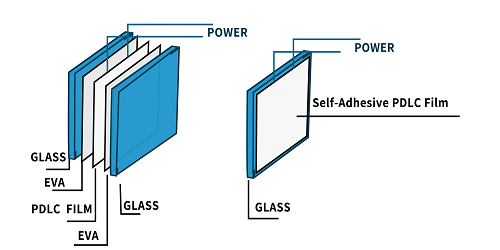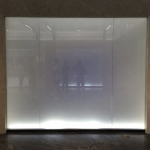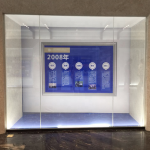PDLC switchable smart film
Switchable smart film is one of the newer additions to window tint film options and is really A cool aspect to see in person.once electricity is applied, this smart film creates a frost opaque look but can switch back and forth from frosted glass to clear glass.
Smart film is useful for several purpose and can be included in a lot of different places while this option does require some additional look to connect to a power source in order for it to be operable. The effects are truly amazing and provide any space or area with privacy and beauty.
Unlike fixed glass, which is either opaque or transparent, switchable glass allows the user to choose its form and function. In addition, Switchable glass panels designers a broader range of glazing options that were unavailable using traditional glass.
- switch foil for glass wall
- switch foil for glass wall
- cuved smart glass for conference room
- cuved smart glass for conference room
- curved switchable glass
- curved switchable glass
- smart vinyl pdlc film with high transparency
- smart vinyl pdlc film with good haze to keep privacy
- switchable vinyl pdlc film with good haze when off
- switchable vinyl pdlc film with high transparency when on
Applications:
Corporate / leisure/ retail /Architects/interior designers /unique projects.
Privacy windows and doors in homes and offices.
Variable privacy room partitions
Electronic blinds curtains and artwork
Solar protection or radiant heat control
Security and safety panels
Skylights/ conservatory roofs/ Display cases
Sales kiosks,Car windows /Monitoring rooms
Single and double glazed facades
Bank and ATM doors
Installing smart film can be a DIY project if you’re handy, or you may prefer to hire a professional.
Here are the general steps:
Measure the Glass: Carefully measure the glass surface where you plan to apply the smart film. Precision is key here – it’s better to have a bit extra that can be trimmed later than not enough.
Cut the Film: Using your measurements, cut the smart film to size. Again, it’s better to err on the side of cutting the film slightly larger than necessary.
Clean the Glass: Thoroughly clean the glass surface. Any dust or debris can prevent the film from adhering properly.
Apply the Film: Peel off the protective layer from the adhesive side of the smart film and carefully apply it to the glass. Be sure to remove any bubbles that form – a small squeegee can be useful for this.
Connect to Power: Connect the wires from the film to a transformer or switch. This will provide the electrical current needed to switch the film from opaque to transparent. Always consult a professional if you’re unsure about this step.
Test the Film: Once everything is installed, test the film to make sure it works correctly. If you notice any issues, refer to the manufacturer’s troubleshooting guide or contact them for support.
















